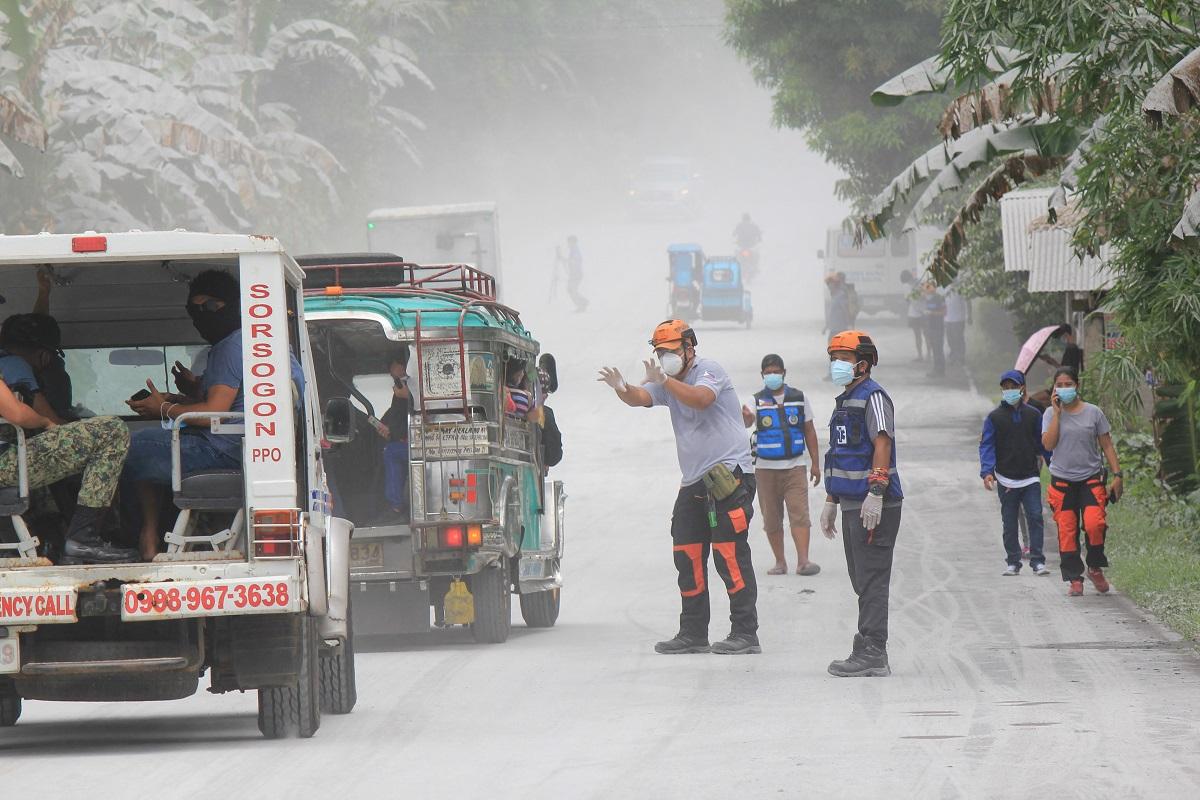Alert Level 1 remains over Bulusan Volcano; residents warned from danger zone

Alert Level 1 remains up over Bulusan Volcano in Sorsogon, with the Philippine Institute of Volcanology and Seismology (PHIVOLCS) recording continuous seismic activity, the agency said on Sunday.
A bulletin released by PHIVOLCS at 8 p.m. noted that the volcano registered 27 weak volcanic earthquakes until 4 p.m.
"Alert Level 1 status remains in effect over Bulusan Volcano, which means that it is currently in an abnormal condition," the agency said.
PHIVOLCS said that thin fine ashfall fell on the general northwestern sector of the edifice and affected the barangays of Puting Sapa, Añog, Guruyan, Catanusan, Buraburan and Sangkayon in Juban and Bolos in Irosin.
Rumbling sound and sulfurous odor were also observed by residents of Barangays Añog, Guruyan, and Catanusan. After the eruption, degassing was observed from the northwest vent on the summit for the first time this year, it added.
PHIVOLCS Director and Science Undersecretary Renato Solidum Jr. said the phreatic eruption occurred at 10:37 a.m. and it lasted for approximately 16 minutes.
Since then, the alert status of Bulusan Volcano has been raised from 0 (normal) to Alert Level 1 (low-level unrest).
'Avoid 4-km radius of PDZ'
PHIVOLCS reminded the residents to avoid the four-kilometer radius of the permanent danger zone.
It noted that pilots should avoid flying close to the summit of Bulusan Volcano "as ash from any sudden phreatic eruption can be hazardous to aircraft."
"Furthermore, people living within valleys and along river/stream channels especially on the southeast, southwest and northwest sector of the edifice should be vigilant against sediment-laden stream flows and lahars in the event of heavy and prolonged rainfall should phreatic eruption occur," it added.
Under Alert Level 1, the following may be observed in Bulusan Volcano, PHIVOLCS said in an explainer on its website:
- slight increase in volcanic earthquake and steam/gas activity;
- sporadic explosions from existing or new vents;
- notable increase in the temperature of hot springs; and
- slight inflation or swelling of the edifice.
This means "hydrothermal, magmatic or tectonic disturbances. The source of activity is shallow, near crater or in the vicinity of Irosin Caldera. Entry into the PDZ must be prohibited," it added. — Mel Matthew Doctor/BM, GMA News




